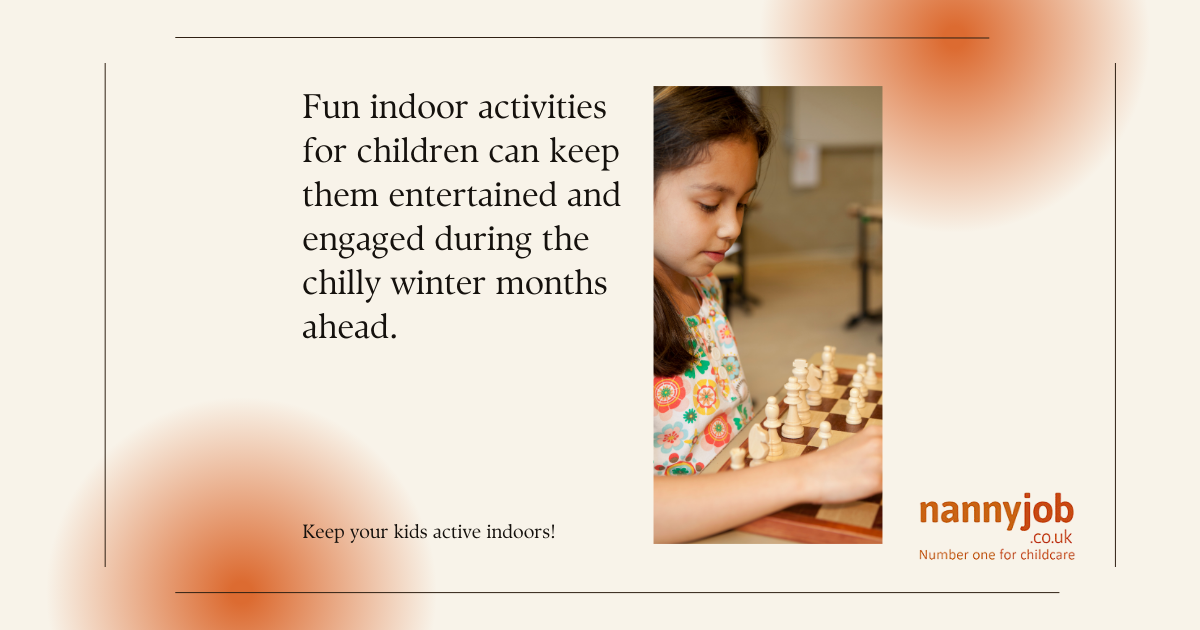Rainy days can be a challenge when you’re childminding, but they’re also an opportunity to spark creativity and have some indoor fun. Keeping children entertained and engaged during bad weather doesn’t have to be complicated. With a little planning and imagination, rainy days can become some of the most memorable moments for kids. Here are some tried-and-true activities to brighten up even the gloomiest of days.
1. Indoor Treasure Hunt
Turn your home or childminding space into an adventure zone with a treasure hunt!
- How to Play: Hide small toys, trinkets, or treats around the house. Create a treasure map or leave clues for the children to solve.
- Themes to Try: Pirate treasure, nature hunt (find leaves, shells, or other natural items), or a favorite story theme like Peter Pan.
- Educational Twist: Include letters, numbers, or shapes in the clues to reinforce learning.
Why It Works: This activity keeps kids moving and thinking while burning off energy indoors.
2. DIY Arts and Crafts Station 
Crafting is a fantastic way to keep children busy and creative on rainy days.
- Craft Ideas:
- Handmade Cards: Let kids create cards for upcoming birthdays or holidays using paper, crayons, stickers, and glue.
- Recycled Crafts: Use items like cardboard boxes, paper rolls, and plastic containers to build imaginative creations.
- Painting Fun: Provide washable paints and let kids create masterpieces on paper or canvas.
Pro Tip: Lay down old newspaper or a plastic sheet to minimize mess and make cleanup a breeze.
3. Build a Cosy Reading Nook 
Rainy days are perfect for curling up with a good book.
- How to Set It Up: Create a cosy corner with cushions, blankets, and soft lighting. Add a variety of books suited to the children’s ages and interests.
- Interactive Twist: Let kids choose a book for you to read aloud, or encourage them to act out their favorite scenes.
- For Little Ones: Use touch-and-feel or lift-the-flap books to keep them engaged.
Why It Works: Reading not only keeps kids entertained but also fosters imagination and language skills.
4. Indoor Obstacle Course 
Get kids moving with an obstacle course using everyday household items.
- How to Set It Up: Use cushions, chairs, blankets, and boxes to create tunnels, hurdles, and balance paths.
- Game Variations: Time each child to see how fast they can complete the course or add a story element (e.g., escaping from a “rainforest”).
- Safety First: Ensure obstacles are sturdy and safe to prevent injuries.
Why It Works: It’s a fun way to keep kids active and burn off extra energy indoors.
5. Baking and Cooking Together 
Turn a rainy day into a culinary adventure by baking or cooking with the kids.
- Kid-Friendly Recipes:
- Cookies or Cupcakes: Let kids decorate them with sprinkles and icing.
- DIY Pizzas: Provide small pizza bases and toppings for kids to assemble their own creations.
- Fruit Skewers: Easy and healthy—let kids build colorful skewers with their favorite fruits.
Pro Tip: Assign age-appropriate tasks, like stirring batter or rolling dough, to make the process safe and fun.
6. Sensory Play and Exploration 
Sensory activities are a great way to engage younger children, especially on a rainy day.
- Ideas to Try:
- Playdough Fun: Provide rolling pins, cookie cutters, and molds for creative play.
- Sensory Bins: Fill a bin with rice, pasta, or sand, and add small toys or tools for exploration.
- Water Play: Use bowls of water with floating toys, cups, and spoons for scooping and pouring.
Why It Works: Sensory play stimulates children’s senses and encourages creativity and problem-solving.
7. Indoor Movie Marathon 
Transform your living room into a mini cinema for a cozy movie day.
- How to Set It Up:
- Choose age-appropriate movies or shows.
- Create “tickets” for the kids to redeem at the “box office.”
- Provide popcorn and drinks for an authentic movie experience.
Interactive Twist: Pause the movie halfway through for a discussion or let kids act out scenes after watching.
Why It Works: It’s a relaxed activity that keeps kids entertained while giving you a chance to recharge.
8. Science Experiments at Home 
Turn a rainy day into a mini science lab with simple experiments.
- Easy Experiments:
- Volcano Eruption: Use baking soda, vinegar, and food coloring in a cup to create a fun “eruption.”
- Rainbow in a Jar: Layer different liquids (honey, dish soap, water, and oil) to create a colorful effect.
- Balloon Rockets: Use a straw, string, and balloon to demonstrate propulsion.
Why It Works: Hands-on experiments are exciting, educational, and memorable for kids.
9. Music and Dance Party 
Get the wiggles out with a music and dance session!
- How to Organize:
- Create a playlist of the kids’ favorite songs.
- Use scarves, tambourines, or makeshift instruments to add to the fun.
- Include games like freeze dance or musical chairs.
Why It Works: Dancing keeps kids active and boosts their mood, even on a gloomy day.
Conclusion
Rainy days don’t have to be boring when you’re childminding! With a little creativity and preparation, you can turn indoor time into a day of fun, learning, and bonding. From obstacle courses to sensory play, these activities are sure to keep kids engaged and happy, no matter the weather. Next time the rain starts pouring, you’ll be ready with a list of exciting ideas to brighten their day.






 If you’re looking for ways to make the final days magical, try these simple and fun activities:
If you’re looking for ways to make the final days magical, try these simple and fun activities:











